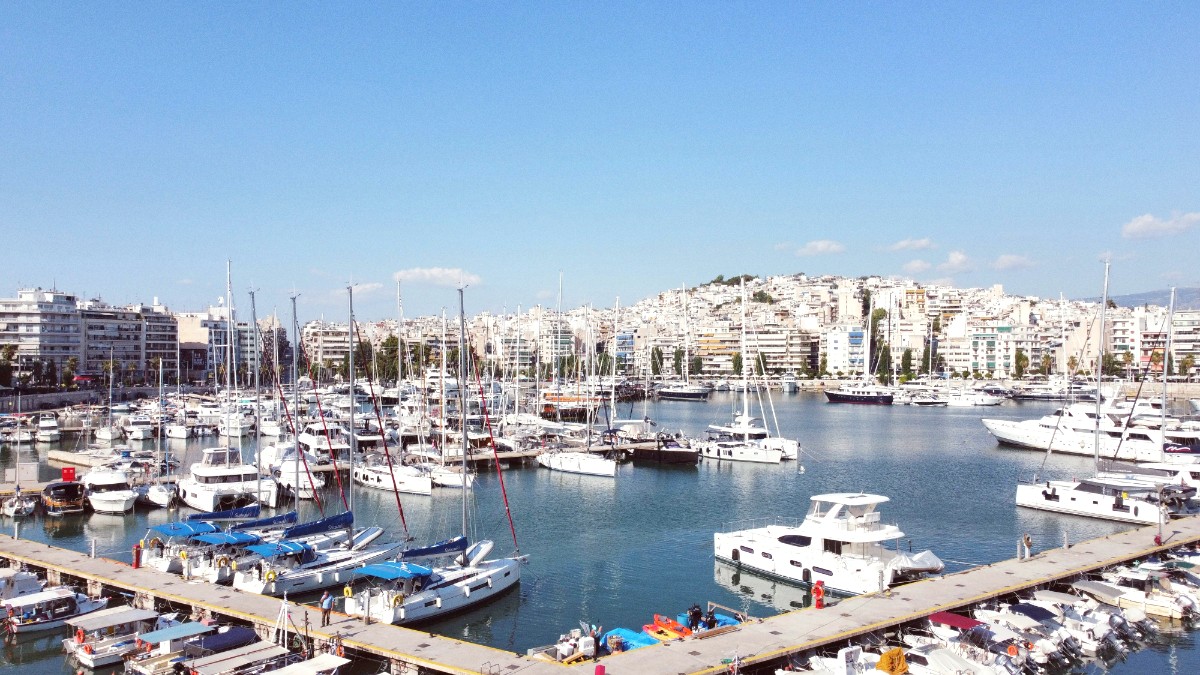
Athens, Greece
The city’s strategic maritime position shaped its history and its current urban landscape. Explore these locations to appreciate Piraeus's unique character and historical depth.
Piraeus, as Europe's largest passenger port, serves as the main gateway to the Greek islands and a major Mediterranean cruise ship hub. Its constant activity reflects Greece's enduring maritime heritage.
A Wide-angle lens for smartphone photography enhances landscape and architectural shots, capturing expansive views from Kastella or the full sweep of the marinas.
Address: Iroon Politechniou 31. Hours: Wednesday - Monday, 08:30 - 15:30. Closed Tuesdays and public holidays. Entry Fee: Approximately €4 (subject to change).
Address: Akti Themistokleous, Freattyda. Hours: Tuesday - Saturday, 08:30 - 14:00. Closed Sundays and Mondays. Entry Fee: Approximately €4 (subject to change).
Address: Filonos 29. Hours: Vary, generally closed weekends and public holidays. Check local listings for current exhibitions. Entry Fee: Free.
Address: Lofos Profiti Ilia, Kastella. The setting itself, with the view, merits a visit even without a performance. Check local schedules for specific events.
For convenient booking of attractions and museum tickets, consider GetYourGuide.
Piraeus holds scattered remnants of its ancient glory, giving glimpses into its strategic past.
Remains of the Themistoclean Walls and Kononian Walls, which fortified the city in antiquity, can be seen in various locations around Piraeus. These walls were important for protecting Athens' port and its connection to the capital, forming a tangible link to ancient Athenian power.
Remains of one of the main gates of ancient Piraeus, part of the extensive fortifications. It served as a controlled entry point to the heavily defended port.
Limited archaeological remains of the massive naval arsenal built in the 4th century BC to store trireme equipment. While not much remains visible, these ruins speak to the incredible logistical and engineering prowess of ancient Athens.
A historic district with numerous preserved neoclassical mansions. This area glimpses Piraeus's wealthier past as a maritime trading center in the 19th and early 20th centuries. The architecture showcases a blend of European and local influences.
The city's strategic coastal position defined its growth from ancient naval base to modern port, shaping its historical development.
Walking through these areas, one can imagine the city's evolution through different historical periods, from antiquity to modern times.
Remains of the Themistoclean and Kononian Walls, for protecting Athens' port, can be seen throughout Piraeus.
Part of the ancient fortifications, this main gate served as a controlled entry point to the heavily defended port.
Limited remains of the 4th-century BC naval arsenal, speaking to ancient Athens' engineering prowess.
Beyond ancient ruins, Piraeus's historical districts share insight into its more recent past as a significant trading hub.
While an urban port, Piraeus features some natural spaces and coastal beauty.
A small, urban beach with a pleasant promenade near Marina Zeas. Popular with locals for swimming and enjoying the sea breeze, a convenient spot for a quick dip.
The promenades along Marina Zeas and Mikrolimano have picturesque sea views, especially at sunset. The bustling port contrasting with serene marinas forms an unique visual.
A green space near Marina Zeas, a pleasant area for relaxation, walking, and enjoying the maritime atmosphere. It features statues and monuments, a quiet escape from the city bustle.
For more expansive and organized beaches, travel to the numerous options along the Athens Riviera (e.g., Glyfada, Vouliagmeni, Varkiza). These are easily accessible by tram or bus from Piraeus.
Lake Vouliagmeni, located further along the Athens Riviera (accessible by public transport), features an unique natural thermal lake experience with therapeutic properties.
Small local parks within Piraeus neighborhoods give green respites for residents. Ideal for a quick rest amidst urban exploration.
Kastella Hill and the marinas are prime locations for watching the sunset over the Saronic Gulf, making for memorable evenings.
The fresh sea air along the waterfronts makes for invigorating walks and runs, a natural refreshment during your visit.
Venture off the main tourist paths to discover Piraeus's unique character.
These places give distinct local experiences, from treasure hunting to architectural appreciation away from the main tourist flow.
Piraeus is walkable within neighborhoods, but using public transport (Metro, buses) connects different areas easily. Taxis are also readily available.
Metro: Direct line to Athens city center and airport. Buses: Extensive local bus network connects neighborhoods and beaches along the Riviera. Taxis: Convenient for quick trips, especially up Kastella Hill.
Combine visits to nearby landmarks, like Marina Zeas and the Maritime Museum, for efficient exploration. Group attractions by location to minimize travel time.
Consider purchasing tickets for popular attractions like museums in advance, especially during peak season, to save time and avoid queues.
Kastella Hill and the marinas offer stunning panoramic views of Piraeus, the Saronic Gulf, and Athens.
Capture the dynamic maritime landscape and historical architecture.
Consider a local guided tour for a insight into Piraeus's history and hidden stories.
A structured tour enriches your understanding of this historic port city.
Engage with locals at cafes, tavernas, and markets to experience genuine Greek hospitality.
These interactions deepen your cultural immersion in Piraeus.
Port of Piraeus, Marina Zeas, Mikrolimano, and Kastella Hill are central to the city's identity.
Archaeological Museum of Piraeus and Maritime Museum of Greece offer insights into the city's rich past.
Discover local churches, the flea market, or quiet neighborhood streets for authentic experiences.